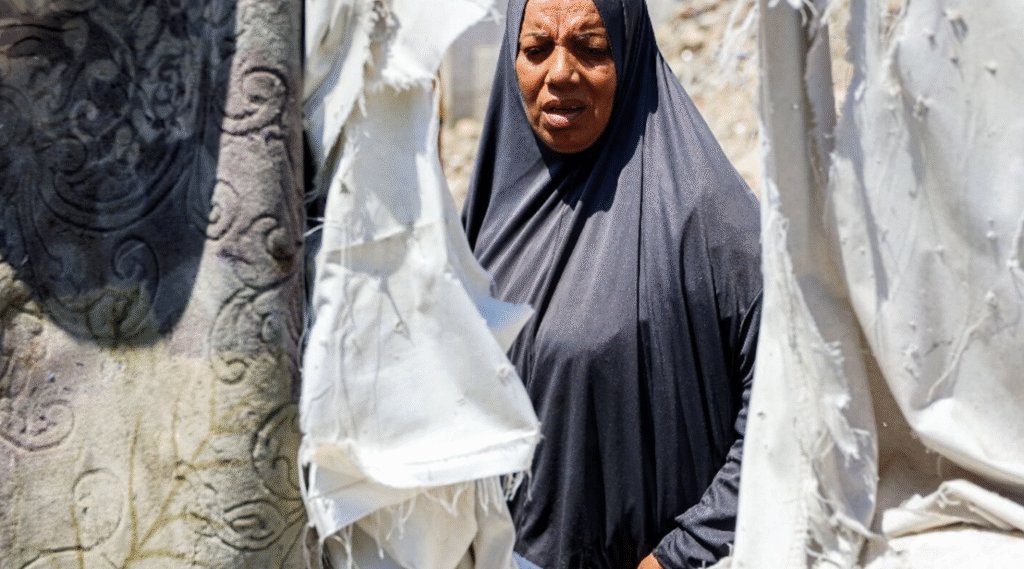Conflict in Gaza entered a critical stage this week after the Israeli military announced it had gained control of 40 percent of Gaza City. The military advance highlights both the intensity of urban combat and the scale of destruction that has engulfed Gaza’s largest city. At the same time, the fighting continues to deepen a humanitarian crisis that has drawn sharp international criticism.
Israeli military advances into Gaza City neighborhoods
Israeli forces expanded their operations into northern and central Gaza City, claiming to capture several neighborhoods previously controlled by Hamas fighters. Military officials explained that troops seized government facilities, tunnel shafts, and weapons caches as part of their advance.

Commanders stressed that their primary objectives include dismantling Hamas’ command infrastructure and preventing militants from regrouping. However, the ongoing street battles and tunnel warfare demonstrate that Hamas remains capable of mounting resistance despite territorial losses.
Humanitarian crisis in Gaza worsens with power shortages and medical strain
While the Israeli advance signals military progress, the humanitarian toll on Gaza’s civilians has grown more severe. Local health authorities report that hospitals in Gaza City are overwhelmed, operating without sufficient medicine, fuel, or electricity. Ambulances struggle to reach neighborhoods where fighting is active, leaving wounded civilians stranded for hours.

Aid groups warn of looming famine and disease outbreaks as food supplies dwindle and clean water becomes scarce. Thousands of displaced families now live in overcrowded shelters or makeshift camps. For many, daily survival depends on limited aid trucks that are unable to meet the urgent demand.
Despite Israel’s claims of territorial control, Hamas has continued to resist using tunnel systems, sniper positions, and guerrilla-style attacks. A spokesperson for the group declared that its fighters would battle “house to house and alley to alley,” underscoring their commitment to prolonging the fight.
International community pressures Israel and Hamas for ceasefire
The scale of civilian suffering has sparked a new wave of international calls for peace. The United Nations urged both parties to agree to an immediate ceasefire and allow humanitarian corridors to deliver aid. European Union officials also pressed Israel to exercise restraint, warning that excessive civilian casualties risk violating international law.
Meanwhile, the United States repeated its support for Israel’s security but added pressure for measures to protect noncombatants. Diplomatic sources confirmed that Washington is quietly encouraging regional partners, including Egypt and Qatar, to mediate talks.
Regional protests and Arab nations’ response to Gaza conflict escalation
The fighting has triggered widespread protests across the Middle East. Demonstrators in Jordan, Lebanon, and Egypt marched in solidarity with Palestinians, demanding stronger international action against Israel’s offensive. Governments in the region, especially Egypt, fear that a prolonged war could destabilize neighboring states and trigger mass refugee flows.
Israel insists it will continue operations until Hamas’ military capacity is dismantled, but Palestinian leaders argue that the heavy civilian toll undermines prospects for long-term peace. If hostilities persist, Gaza City could face permanent displacement of residents, economic collapse, and deepened political divisions.


 Airstrikes and Gunfire Kill at Least 57 in Gaza as Conflict Deepens
Airstrikes and Gunfire Kill at Least 57 in Gaza as Conflict Deepens  Italy sends naval vessel to help Gaza aid flotilla
Italy sends naval vessel to help Gaza aid flotilla  EU lays out new tariffs and sanctions on Israel over war in Gaza
EU lays out new tariffs and sanctions on Israel over war in Gaza  Literature as Resistance Amid the War in Gaza
Literature as Resistance Amid the War in Gaza  German Jewish Group Calls on Merz to Support Israel
German Jewish Group Calls on Merz to Support Israel  Finland supports two-state solution for Israel, Palestinians
Finland supports two-state solution for Israel, Palestinians